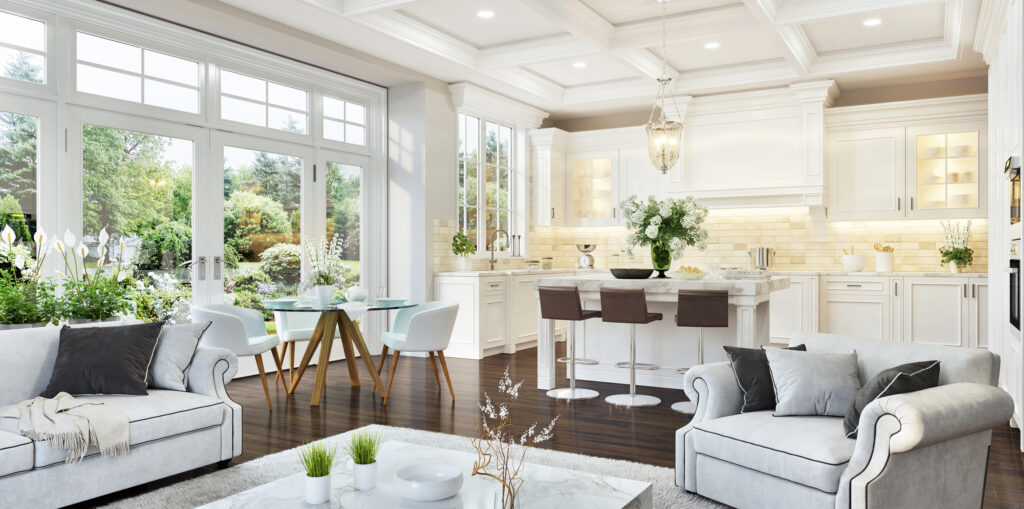Open floor plan house have become increasingly popular over the years and for good reason. They offer a feeling of openness, more natural sunlight, more usable space, and a greater social connection.
But when the cold weather months arrive, an open floor plan home can suddenly present a major challenge – keeping the home warm without racking up high heating bills.
Fear not – we put together a list of tips for keeping an open floor plan home toasty warm and
your wallet happy all winter long.
What Is an Open Floor Plan Home?
An open floor plan (or open concept) home is designed with functionality and flexibility in mind. The absence of walls between main living areas allows natural light to flow throughout the space, making the house feel brighter and more spacious. This layout also allows for more interaction and communication between family members and guests, making it perfect for entertaining and keeping an eye on small children.

Tips for Keeping an Open Floor Plan Home Warm
Add Insulation.
One of the best ways to make your home as energy-efficient as possible, no matter the layout, is with adequate insulation. By ensuring that the attic, walls, floors, and ceilings are properly insulated, you can prevent significant heat loss and keep warm air inside where it belongs.
Seal Gaps.
Gaps and cracks around windows, doors, electrical outlets, and plumbing pipes let a surprising amount of warm air escape. Check these areas and caulk, seal, and weather strip where needed to reduce drafts and heat loss.
Warm Up Windows.
Thick, heavy curtains or window coverings can help keep the cold air out and the warm air in, improving a home’s overall thermal comfort. But don’t stop there. During daylight hours, keep window coverings open to let natural sunlight flood the living area with warmth. Come night time, close window coverings to trap as much heat inside as possible.
Add Supplemental Heat.
Fireplaces, stoves, and space heaters can be a great source of heat for an open floor plan house.
They provide added warmth and create a cozy and inviting atmosphere.
Warm Up the Floors.
Area rugs and carpeting can also help to add warmth and comfort underfoot. Hard floorings like tile, wood, and vinyl plank can feel cold during the winter months. Area rugs and carpet can help insulate the floor and make the space feel warmer.
Run Ceiling Fans.
A ceiling fan is not only great at providing a cool breeze on a hot summer day, but it can also help keep you warm come winter. Simply set the blades to run in reverse so they push warm air down from the ceiling toward the center of the room. This will allow you to turn the thermostat down a couple of degrees, saving you a few bucks on your heating bill.
Sure, these tips and tricks can take some pressure off your heating system so you can pay less to stay warm,
but they’ll do little to help an aging, inefficient system deliver the reliable warmth it once did.
Are you confident your system can tackle another winter?
If not, contact Eagle Service Company to schedule a free in-home evaluation and new system proposal.


